How to mount a rifle-scope
Posted: Fri Mar 09, 2007 12:00 pm
How to mount a rifle-scope without cant
Whilst my way of doing it isn't engraved in stone, it works and very well at that.
For those unfamiliar with the subject please bear in mind that the following pictures show a tip-off/dovetail mount being mounted on dovetail grooves. There are other type of scope mounts and bases but the principles of alignment of the vertical reticle and thereby the horizontal one as well, remains the same in all cases.
To start with, you will need a device to hold the rifle steady, a string or line (preferably coloured) suspended from above and with a weight at the bottom (a C-Clamp in this case) to keep it steady, torque wrench (preferred but not essential), the appropriate Allen/Hex key/s, a small spirit level and obviously the rifle, scope and scope mount.
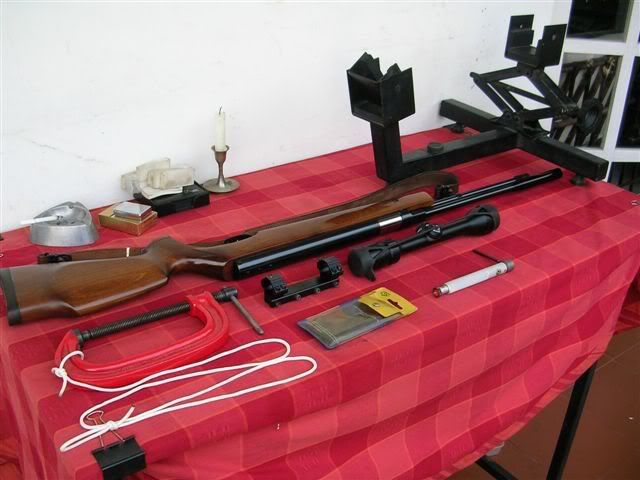
Now before you go any further, ensure that the gun is unloaded.
Next, remove the top straps from the mounts and fix the mount base to the action. In my case I know exactly where I want to place the mount but in case you do not, you will will have to place the scope in the mount and move the base to acquire the correct eye relief or you could just fix the base and then move the scope forward or back to get the correct eye relief provided you have enough scope tube on either side of the turrets.
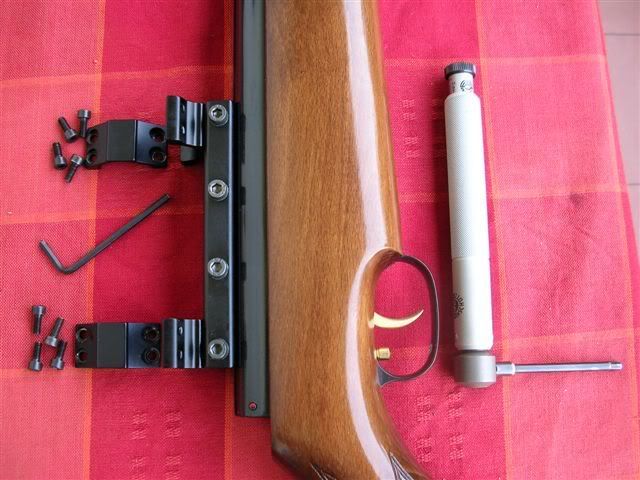
Put the top straps back on and screw in the fasteners a little - enough to make sure the scope does not fall off accidentally but loose enough to move the scope back and forth to get correct eye relief.
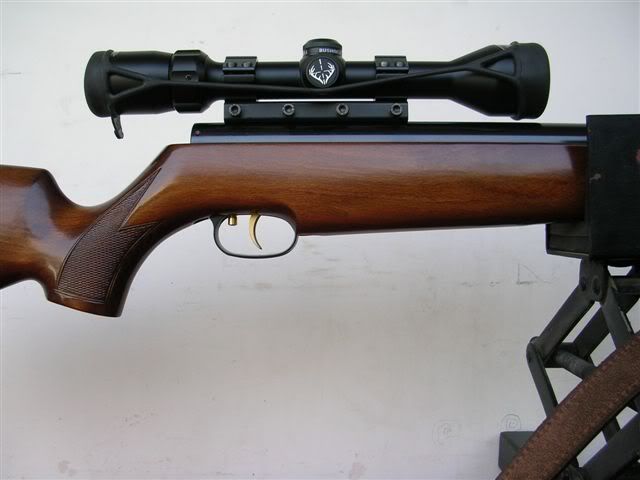
Once you have got the desired eye relief make a reference mark with a pencil just in case the scope slips within the mount.

Now suspend your reference line or string with a weight at the bottom to keep it steady.
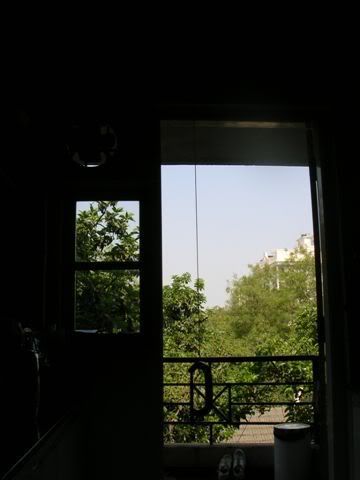
Place the rifle in the gun rest and use something that wont damage the stock to keep the rifle from shifting unless pressure is applied to it.
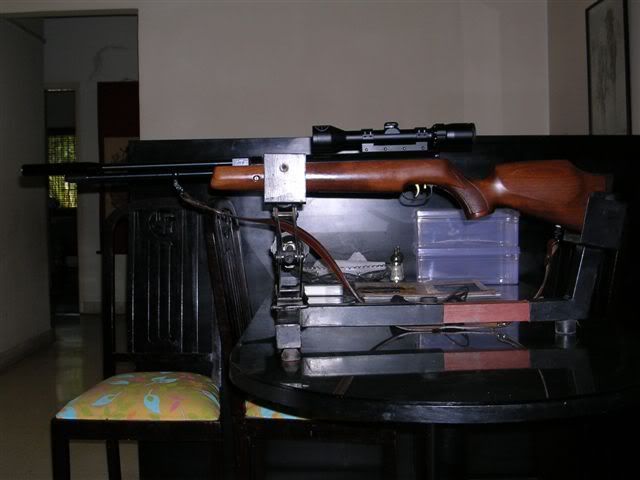
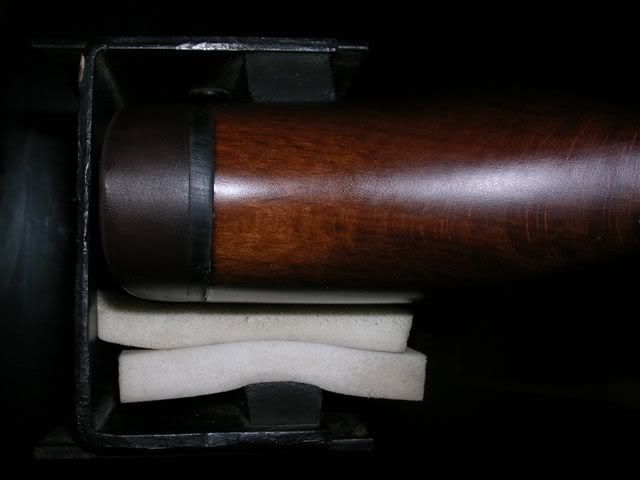

If your rifle action has a flat part put the spirit level on that, failing which use double sided tape (if necessary) to stick the level to the flat part of the stock as shown.
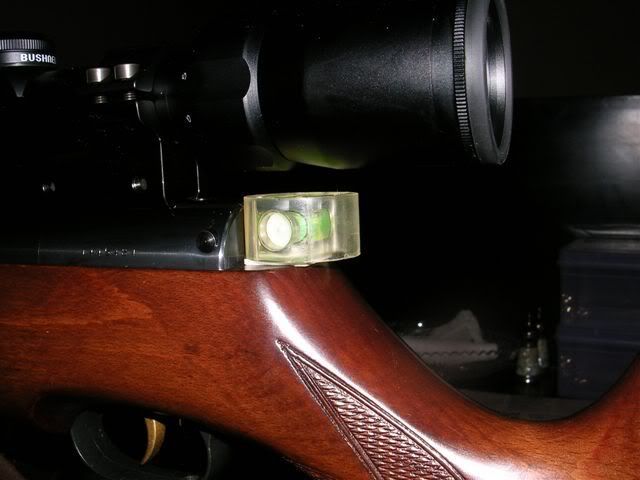
Move the gun rest so that you can see the reference line / string more or less in the centre of the scope.
Now twist the gun a bit until the spirit level shows that the rifle is not canted to left or right, i.e. the bubble is in the centre. Henceforth, do not touch the stock, action or the table that the gun rest is placed on.
Rotate the scope so that the vertical reticle is either parallel to the reference line or overlapping it. I prefer it to be parallel.
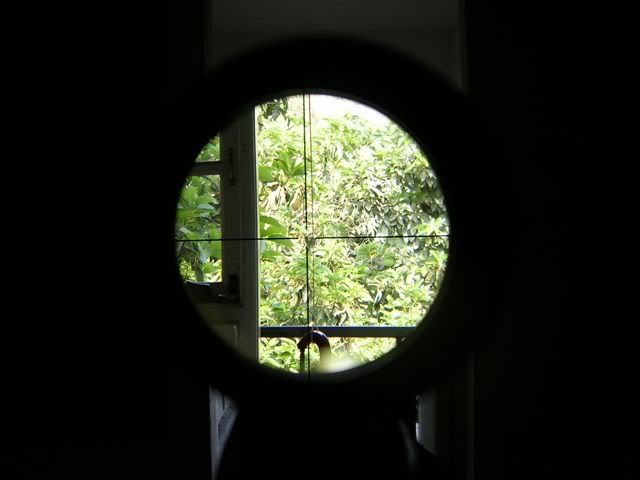
Re-check spirit level to ensure that the bubble is still centred.
Now you start tightening the strap fasteners very gently and only one turn at a time. Keep rechecking whether the vertical reticle is aligned and that the bubble in the spirit level is in the centre. This must be done constantly.
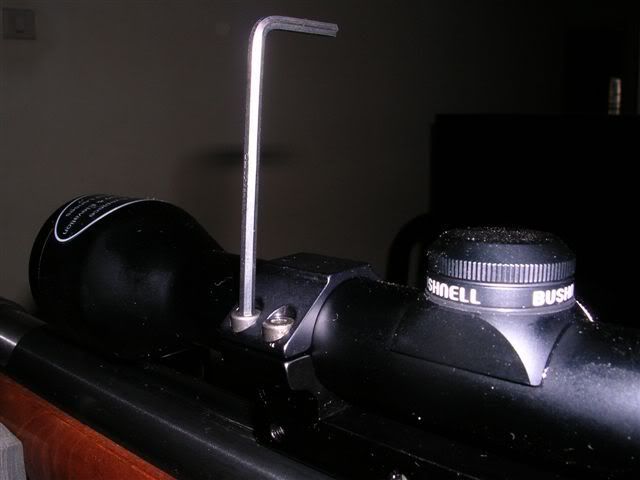
Do not apply any sideways pressure whilst tightening the screws. Do not overtighten or else you will crimp or mark the scope tube. Tighten all screws equally, so that when you are finished doing so, the gaps between the top and bottom straps on the left and right are the same or almost the same.
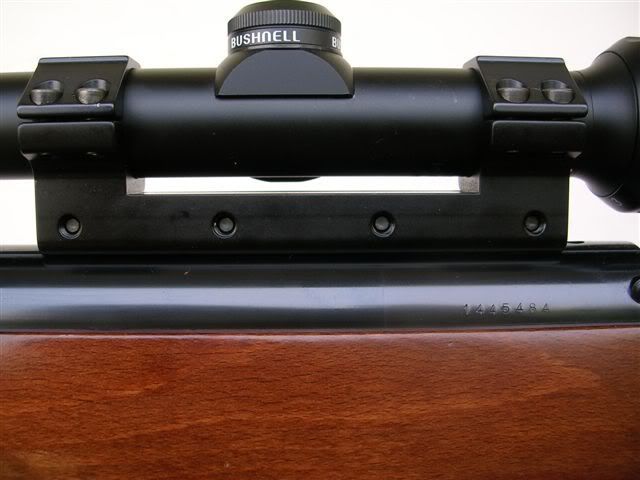

You will have noticed some silver coloured markings at the 12 o'clock position on the base and strap screws. I use these as a sort of 'witness mark' as they tell me if a screw is working loose.
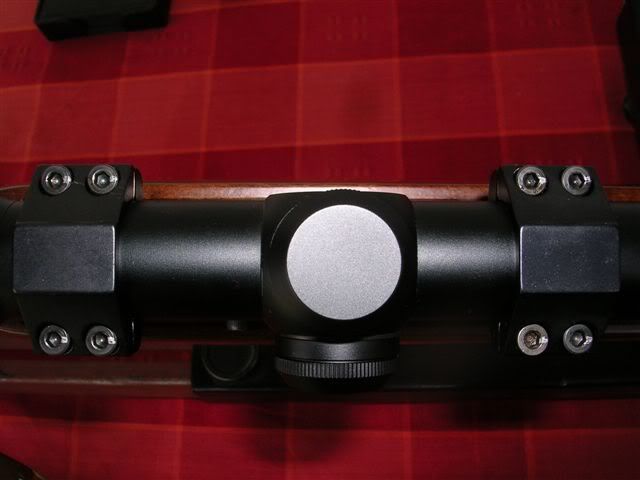
Please degrease the screw heads before making the marks with a permanent marker.
I usually use Loctite 243 Removable Threadlock to keep the strap screws from loosening. Please degrease the threads before applying the threadlock.
Mack The Knife
Whilst my way of doing it isn't engraved in stone, it works and very well at that.
For those unfamiliar with the subject please bear in mind that the following pictures show a tip-off/dovetail mount being mounted on dovetail grooves. There are other type of scope mounts and bases but the principles of alignment of the vertical reticle and thereby the horizontal one as well, remains the same in all cases.
To start with, you will need a device to hold the rifle steady, a string or line (preferably coloured) suspended from above and with a weight at the bottom (a C-Clamp in this case) to keep it steady, torque wrench (preferred but not essential), the appropriate Allen/Hex key/s, a small spirit level and obviously the rifle, scope and scope mount.

Now before you go any further, ensure that the gun is unloaded.
Next, remove the top straps from the mounts and fix the mount base to the action. In my case I know exactly where I want to place the mount but in case you do not, you will will have to place the scope in the mount and move the base to acquire the correct eye relief or you could just fix the base and then move the scope forward or back to get the correct eye relief provided you have enough scope tube on either side of the turrets.

Put the top straps back on and screw in the fasteners a little - enough to make sure the scope does not fall off accidentally but loose enough to move the scope back and forth to get correct eye relief.

Once you have got the desired eye relief make a reference mark with a pencil just in case the scope slips within the mount.

Now suspend your reference line or string with a weight at the bottom to keep it steady.

Place the rifle in the gun rest and use something that wont damage the stock to keep the rifle from shifting unless pressure is applied to it.



If your rifle action has a flat part put the spirit level on that, failing which use double sided tape (if necessary) to stick the level to the flat part of the stock as shown.

Move the gun rest so that you can see the reference line / string more or less in the centre of the scope.
Now twist the gun a bit until the spirit level shows that the rifle is not canted to left or right, i.e. the bubble is in the centre. Henceforth, do not touch the stock, action or the table that the gun rest is placed on.
Rotate the scope so that the vertical reticle is either parallel to the reference line or overlapping it. I prefer it to be parallel.

Re-check spirit level to ensure that the bubble is still centred.
Now you start tightening the strap fasteners very gently and only one turn at a time. Keep rechecking whether the vertical reticle is aligned and that the bubble in the spirit level is in the centre. This must be done constantly.

Do not apply any sideways pressure whilst tightening the screws. Do not overtighten or else you will crimp or mark the scope tube. Tighten all screws equally, so that when you are finished doing so, the gaps between the top and bottom straps on the left and right are the same or almost the same.


You will have noticed some silver coloured markings at the 12 o'clock position on the base and strap screws. I use these as a sort of 'witness mark' as they tell me if a screw is working loose.

Please degrease the screw heads before making the marks with a permanent marker.
I usually use Loctite 243 Removable Threadlock to keep the strap screws from loosening. Please degrease the threads before applying the threadlock.
Mack The Knife